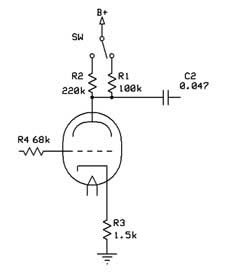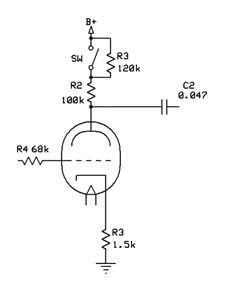Hi everybody! I'd like to ask if it's ok to add a switch for selecting another plate resistor for a preamp tube while the amp is running. I mean something like that:

Is it going to introduce any pops or other noises when switching?
Thanks in advance!

Is it going to introduce any pops or other noises when switching?
Thanks in advance!

Comment